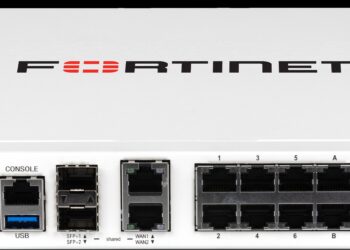Introduction
In the rapidly evolving landscape of technology, AI-powered Software as a Service (AI-SaaS) has emerged as a revolutionary force, reshaping how businesses operate and interact with data. However, as with all great advancements, it comes with its own set of challenges, particularly in cybersecurity. This blog delves into the risks associated with AI-SaaS, with a specific focus on the increasing threat of ransomware attacks.
Understanding AI-SaaS
Before diving into the risks, let’s clarify what AI-SaaS entails. AI-SaaS combines artificial intelligence (AI) with the cloud-based software delivery model of SaaS. This integration offers intelligent, automated solutions that are accessible over the internet. From customer service chatbots to predictive analytics in finance, AI-SaaS is everywhere.
The Cybersecurity Perspective
Enhanced Complexity and Vulnerabilities
AI-SaaS platforms, by their nature, are complex systems. This complexity can introduce vulnerabilities, especially if the AI component is not properly secured. Cybercriminals often exploit these weaknesses to infiltrate networks.
Data Privacy Concerns
AI-SaaS applications process vast amounts of data, including sensitive personal and business information. This makes them prime targets for cyberattacks aiming to steal or manipulate data.
Dependence on Third-Party Providers
Using SaaS solutions means entrusting critical data to third-party providers. If these providers face security breaches, your data is at risk too.
Ransomware: A Growing Threat in the AI-SaaS Ecosystem
Ransomware attacks have evolved to become one of the most significant threats in the digital world. These malicious software attacks encrypt a victim’s data and demand a ransom for the decryption key. In the context of AI-SaaS, ransomware can have devastating effects:
Targeted Attacks
Cybercriminals are now using AI to carry out more sophisticated, targeted ransomware attacks. They can analyze vast amounts of data to identify vulnerabilities and optimize the timing and method of their attack.
Cloud Services as a Vector
Ransomware can spread through cloud services, impacting multiple clients of an AI-SaaS provider. This multi-tenant environment means that an attack on one can easily become an attack on many.
Phishing and Social Engineering
Phishing campaigns have become more sophisticated with AI, tricking users into giving access to sensitive systems. Once access is gained, ransomware can be deployed, crippling the AI-SaaS applications.
Mitigation Strategies
Regular Software Updates and Patch Management
Keep all systems up-to-date with the latest security patches. This reduces the risk of vulnerabilities that hackers can exploit.
Robust Backup and Recovery Plan
Regular backups of critical data can be a lifesaver in a ransomware attack. Ensure these backups are secure and not connected to your primary network.
Employee Training and Awareness
Employees should be trained to recognize phishing attempts and other social engineering tactics. Awareness is the first line of defense.
Collaborative Security Approach
Work closely with your AI-SaaS provider to understand their security measures. Ensure that their security protocols align with your organization’s standards.
Conclusion
The integration of AI into SaaS solutions brings immense benefits but also introduces significant cybersecurity risks, notably in the form of sophisticated ransomware attacks. By understanding these risks and implementing robust security measures, businesses can protect themselves in this dynamic digital age. Remember, in the world of cybersecurity, vigilance and proactivity are key. Stay informed, stay prepared, and stay secure.






